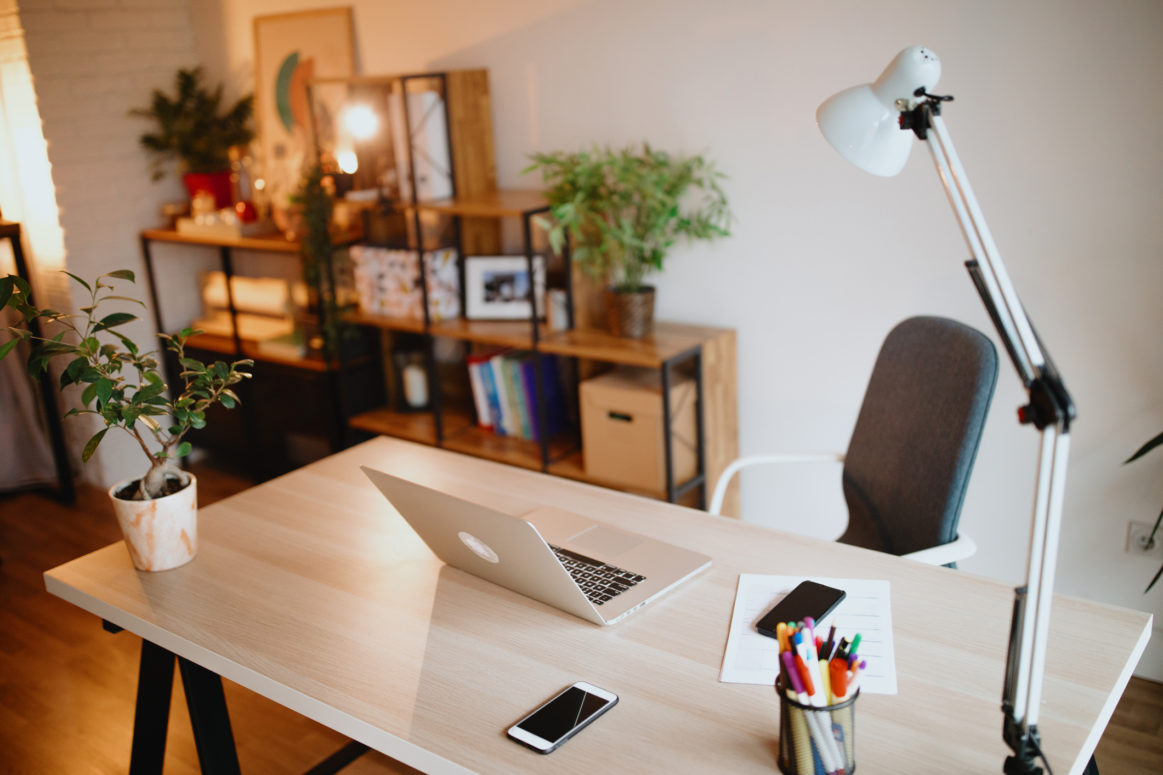By: Barbara Ballinger
When office doors shuttered during the pandemic, many people had to figure out how to work from home. Lots made their dining tables and couches into workspaces, while others converted guest bedrooms into offices. Others moved into bigger or more versatile spaces so that they could have a dedicated space.
Hybrid work is the future, meaning the home office will likely stay in fashion. In fact, many buyers put having such a space at or near the top of their wish list as they shopped for a house or condo over the last two years. If they couldn’t find a home with a designated workspace, they may have been okay with a room that was large enough to carve out a desk area.
But what about you? Home office space isn’t just for your clients; it’s for you, too.
No single solution works for everyone, but there are certain givens that can help you work more efficiently at home since you may have no plans to return permanently to your company’s business office. The following five recommendations may inspire you to arrange a professional workspace.
Designate a Space
Home design professionals say that having a dedicated space where you can close the door, leave out paperwork at the end of the day, and have conversations in private contributes to productivity. Jamie Aloia, a real estate salesperson and member of the Stephanie Mallios Team at Compass in Short Hills, N. J., took an extra bedroom in her New Jersey home when she and her husband moved to the suburb from Brooklyn. An important factor, she says, is that the room has one purpose. “It’s not an office/playroom or office/bedroom. I can close the door, which is also good since we have a three-year-old,” she says.
Salesperson Ellen Hill with Atlanta Fine Homes, Sotheby’s International Realty, in Atlanta, didn’t have a spare bedroom in the condo where she lives alone. She did have a dining room that she didn’t need, though, since her kitchen was equipped as an eat-in.
Even without a separate space, many homes, condos and apartments offer options that may take a bit of creativity:
- Convert a large closet into an office space
- Hollow out space underneath stairs
- Divide a large area into several smaller spaces, designating each space for a specific task
Leslie Cohen, a Raleigh, N.C.-based designer, created an office for her clients using their attic space.
Figure Out How You Want the Space to Look
Aloia set up her space with the basics—a desk, storage files, chair and task lamp—and relied on the room’s two windows for the natural light and ambiance.
Hill put effort into the decor since she knew that friends or family might see her office, which is adjacent to the kitchen. She took a desk from her parents’ home for her worktable; set up a bookshelf behind the desk and her filing cabinet; tacked up a bulletin board where she could post her hot sheets, lead tracker, and photos; and added a “cute” chair, she says.
Kristen Karshis, a salesperson with Keller Williams Realty in Chestnut Hill, Mass., believes, “your environment sets the tone for how productive you are.” Her living room office is where she and two others from her brokerage meet periodically, so she decorated the space in a way that makes room for extra people. Glass doors close off the space, which includes a desk for Karshis, a table where the three can work, a fireplace, good lighting, a bookshelf, and vision boards and whiteboards where they post goals and inspirational sayings.
Fine-tune Your Work Routine
It is important to develop a work routine to stay on track. Hill gets up every morning, makes coffee, and heads into her home office. But even though some work experts advise not taking breaks to do the laundry or cook, Hill finds that taking breaks helps her tend to her personal life as well as her work responsibilities. “That way I don’t end up spending my entire Saturday doing errands,” she says.
Outfit Your Car as a Mobile Workspace
Because many real estate salespeople spend so much time on the go, their cars can become their backup offices. Aloia and Hill said mobile hot spots were essential for their vehicles so they could take calls easily. Aloia also keeps paper and pen on hand; Hill and Karshis work totally digitally, using their iPhones as notepads.
All have good ways to transport materials—Aloia uses a backpack, Hill a tote that’s roomy enough for her presentation folder, and Karshis a big pocketbook that can hold her laptop. Cohen says cupholders are also important for holding coffee cups or water bottles and a place to stash snacks.
Barbara Ballinger is a freelance writer and the author of several books on real estate, architecture, and remodeling, including The Kitchen Bible: Designing the Perfect Culinary Space (Images Publishing, 2014). Barbara’s most recent book is The Garden Bible: Designing Your Perfect Outdoor Space, co-authored with Michael Glassman (Images, 2015).

Comments 1
Setting up an efficient home office is essential for today’s professionals, offering valuable insights to enhance productivity and work-life balance.